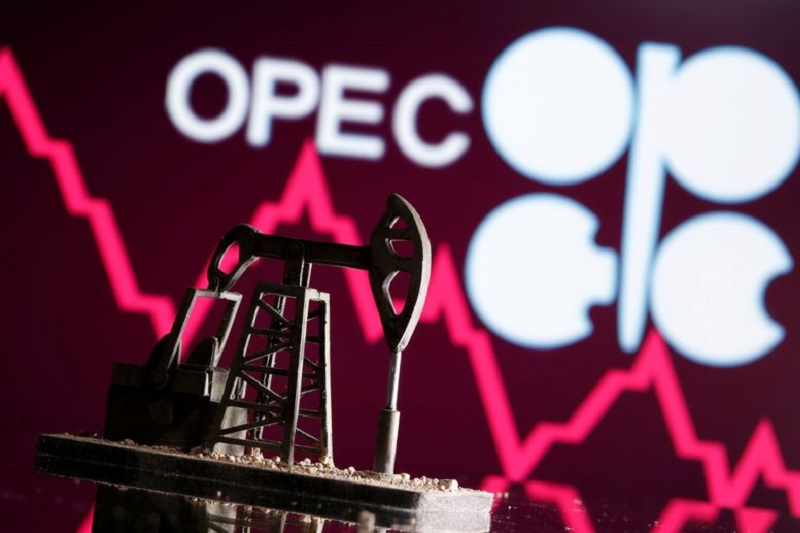[ad_1]
© Reuters. FILE PHOTO: An OPEC sign is seen on the day of OPEC+ meeting in Vienna in Vienna, Austria October 5, 2022. REUTERS/Lisa Leutner
By Alex Lawler and Ahmad Ghaddar
LONDON/DUBAI (Reuters) -OPEC+ agreed to stick to its oil output targets at a meeting on Sunday, two OPEC+ sources told Reuters, as the oil markets struggle to assess the impact of a slowing Chinese economy on demand and a G7 price cap on Russian oil on supply.
The decision comes two days after the Group of Seven (G7) nations agreed a price cap on Russian oil.
OPEC+, which comprises the Organization of the Petroleum Exporting Countries (OPEC) and allies including Russia, angered the United States and other Western nations in October when it agreed to cut output by 2 million barrels per day (bpd), about 2% of world demand, from November until the end of 2023.
Washington accused the group and one of its leaders, Saudi Arabia, of siding with Russia despite Moscow’s war in Ukraine.
OPEC+ argued it had cut output because of a weaker economic outlook. Oil prices have declined since October due to slower Chinese and global growth and higher interest rates, prompting market speculation the group could cut output again. [O/R]
“It’s a rollover until the end of 2023,” an OPEC+ source said after the group’s key ministers reached a decision. The OPEC+ full ministerial meeting was still continuing at 1210 GMT.
On Friday, G7 nations and Australia agreed a $60 per barrel price cap on Russian seaborne in a move to deprive President Vladimir Putin of revenue while keeping Russian oil flowing to global markets.
Moscow said it would not sell its oil under the cap and was analysing how to respond.
Many analysts and OPEC ministers have said the price cap is confusing and probably inefficient as Moscow has been selling most of its oil to countries like China and India, which have refused to condemn the war in Ukraine.
OPEC met virtually on Saturday without Russia and allies and did not discuss the Russian price cap, sources have said.
[ad_2]
Image and article originally from www.investing.com. Read the original article here.

